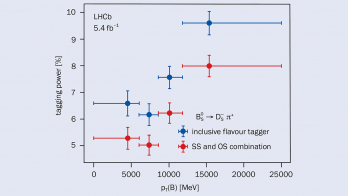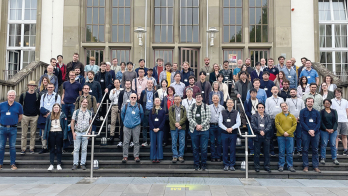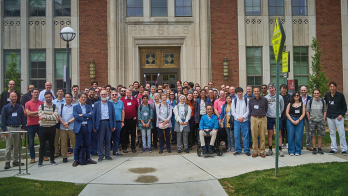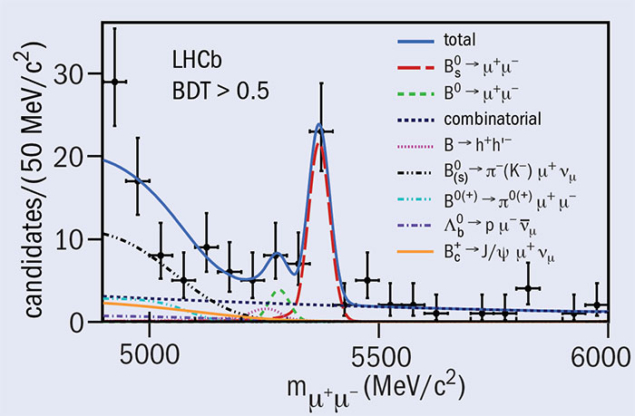
The decay rate of the B0s meson to two muons is a flagship measurement in flavour physics. It is extremely rare and well predicted in the Standard Model (SM), with a branching fraction of (3.65±0.23) × 10–9. It proceeds via a loop diagram that involves the heaviest known particles: the Z and W bosons and the top quark. Any unknown heavier particles that exist are likely to also contribute to this decay, which makes it a very sensitive probe of physics beyond the SM. After three decades of unsuccessful searches, the observation of the decay was first announced in a joint paper in Nature in 2015 by the CMS and LHCb collaborations using LHC data from Run 1.

Recently the LHCb collaboration reported an improved analysis of this decay with data from 2015 and 2016 added to the Run-1 sample. Work during the long shutdown allowed significant improvements to be made in background rejection, which increased the experiment᾿s sensitivity. The B0s → μ+μ– peak is clearly visible in the resulting mass plot, with a small bump possibly due to the B0 meson to its left (see figure, top). The significance of the former is 7.8σ, corresponding to the first observation of this decay by a single experiment. At just 1.6σ, the B0 peak is not significant.
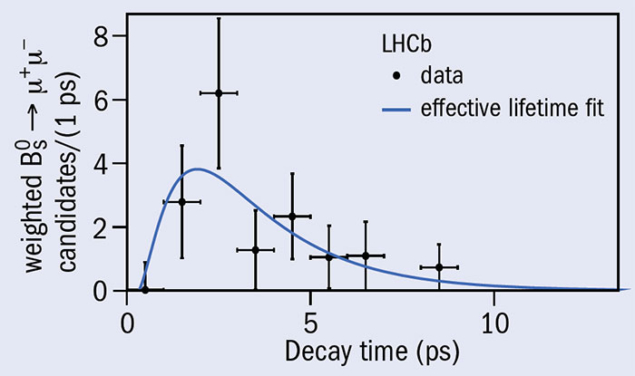
Using the well-known decays B0 → K+π– and B+ → J/ψK+ to calibrate and normalise the efficiencies, the B0s → μ+μ– branching fraction is measured to be (3.0±0.6) × 10–9, which is the most precise measurement to date. Although consistent with the SM, the experimental precision still has to improve before it matches the present theoretical accuracy.
For the first time, LHCb also measured the effective lifetime of the B0s → μ+μ– decay. The Bs meson system has much in common with that of the K0 meson, in that it exhibits a heavier long-lived state and a lighter shorter-lived state. Only the former is allowed to decay into μ+μ– in the SM, but that may not be the case in other scenarios. The contributions of the two states can be disentangled by fitting a single exponential to the lifetime distribution (figure, below). The fitted effective lifetime is consistent within 1σ with the hypothesis of only the heavier state contributing, and within 1.4σ of the opposite. While this result does not yet tell us anything about new physics, it allows the sensitivity to be extrapolated to larger data samples. With the 300 fb–1 integrated-luminosity target of the LHCb phase-II upgrade, the two states could be disentangled at the 5σ level and thus provide a new and important test of the SM.






